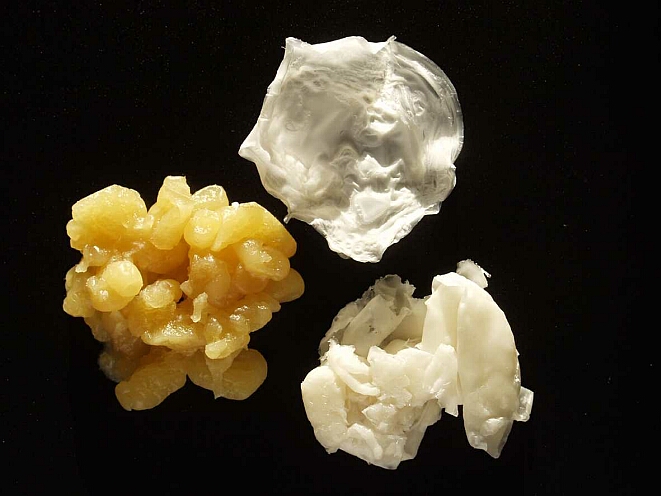Biotechnological research projects at Empa
Biopolymers - Bacteria as plastic manufacturers
Feb 18, 2003 | MARTINA PETER
Research projects at Empa are evaluating and optimizing suitable biotechnological process conditions for the production of tailor-made bioplastic. The natural polymer mass’s good biodegradability and environmental compatibility makes it a versatile material with countless possible applications in many industries, including chemicals, pharmacueticals and even medicine.

Tailor-made raw extracts of bioplastic (polyhydroxyalkanoate or
PHA) before (left) and after (centre, right) purification.


